Floral Fables
Why are Indian paintbrushes different colors? How did wild mint come to be so fragrant and refreshing?
Our ancestors asked the same questions, and came up with some creative stories that have become traditional legends. Test your creative skills to see if your ideas match the ancient ones.
See if you can match the Flowers to the Legends by dragging the flower on the left to the correct legend on the right. Scroll down to see all of your options.
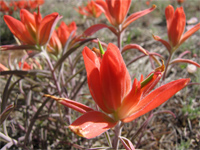
Castilleja sessiliflora
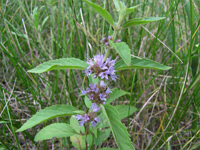
Mentha arvensis
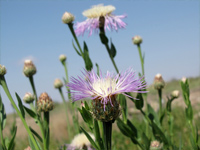
Centaurea Americana
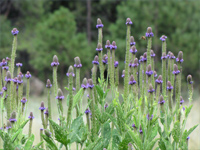
Verbena macdougalii
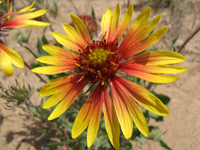
Gaillardia pulchella
Verbena macdougalii,
New Mexican Vervain, MacDougal Verbena

Plants in this genus came to be known as holy herbs because of a legend purporting that Jesus's wounds were stanched with this plant after He was taken down from the cross.
Mentha arvensis,
Field Mint

In Greek mythology, Mentha was a naiad nymph of freshwater streams who had the misfortune to be infatuated with Pluto. When Queen Persephone, Pluto's wife, realized that Mentha was being taken advantage of by her husband, she blamed Mentha and transformed her into a plant fit only for treading on. Pluto softened Mentha's cruel fate by making her an eternally sweet, fragrant, and useful plant.
Centaurea Americana,
American Basket Flower, American Star Thistle

In Greek mythology, Chiron, one of the centaurs (half-man, half-horse creatures), was wounded in the foot by Hercules but was cured with a plant in this genus.
Gaillardia pulchella,
Indian Blanket, Firewheel

The common name of this plant, "Indian blanket," comes from an old legend about a blanket weaver who wished to express his gratitude to the Great Spirit. The old man used the colors of the sunset to weave the most wonderful blanket he had ever made. When he was ready to pass on to the Great Hunting Ground, he asked to be buried in this yellow, red, and brown blanket so that he could present it as a gift to his Maker. To honor the generous weaver, the Great Spirit lavishly blanketed the land with this flower, which displays all the colors of the sunset.
Castilleja sessiliflora,
Paintbrush, Downy Painted-cup

The bright palette of bract colors is behind the myth about the origin of this plant. In the legend, in olden days these were green leafy plants that a Native American artist dipped into his paints to depict the sunset on a deerskin canvas. As he finished with his "paintbrushes," he tossed them over his shoulder, and where they landed, they grew, with their leaves still stained by the paints.

